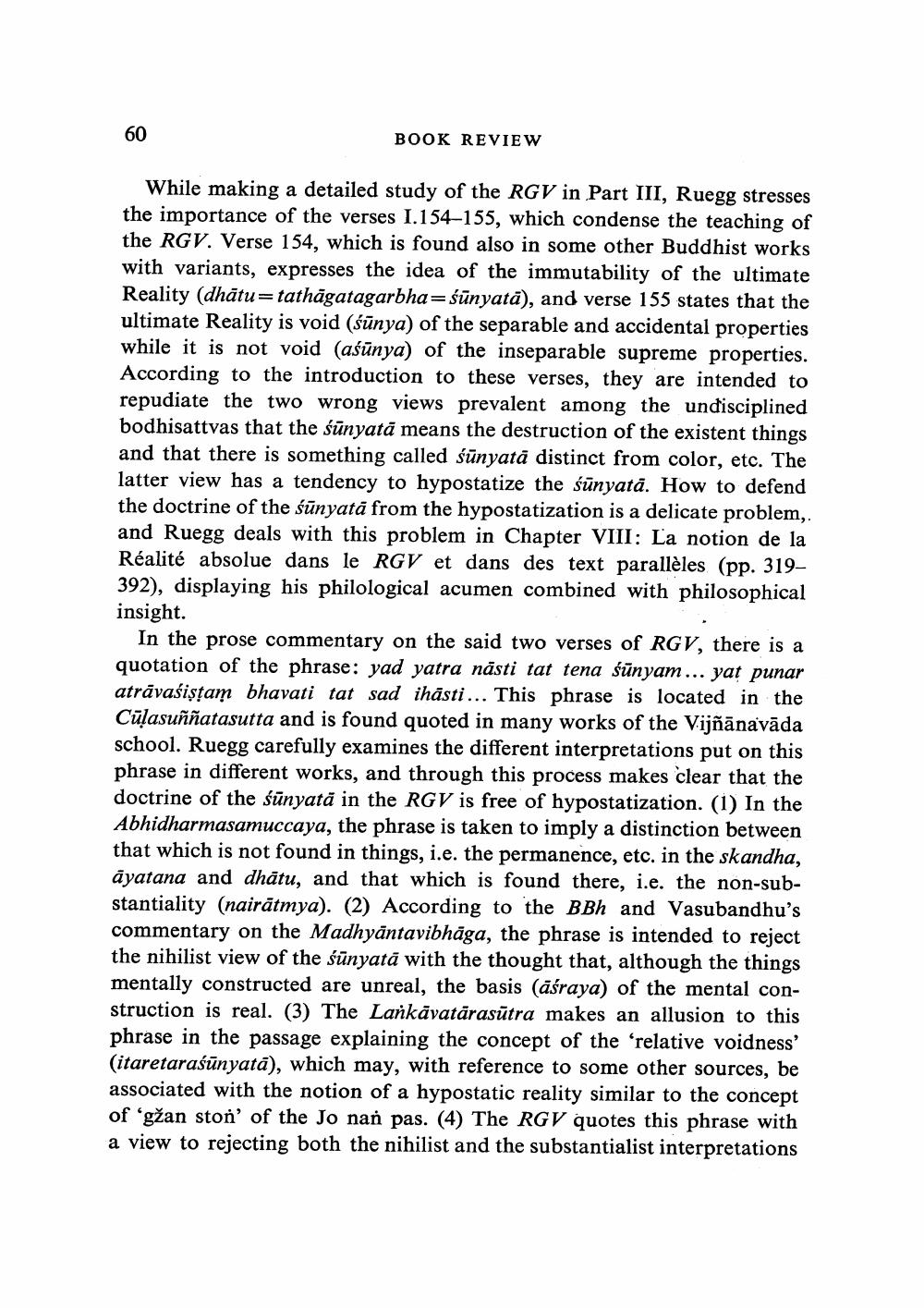________________ 60 BOOK REVIEW While making a detailed study of the RGV in Part III, Ruegg stresses the importance of the verses I.154-155, which condense the teaching of the RGV. Verse 154, which is found also in some other Buddhist works with variants, expresses the idea of the immutability of the ultimate Reality (dhatu=tathagatagarbha=sunyata), and verse 155 states that the ultimate Reality is void (sunya) of the separable and accidental properties while it is not void (asunya) of the inseparable supreme properties. According to the introduction to these verses, they are intended to repudiate the two wrong views prevalent among the undisciplined bodhisattvas that the sunyata means the destruction of the existent things and that there is something called sunyata distinct from color, etc. The latter view has a tendency to hypostatize the sunyata. How to defend ctrine of the sunvata from the hypostatization is a delicate problem, and Ruegg deals with this problem in Chapter VIII: La notion de la Realite absolue dans le RGV et dans des text paralleles (pp. 319- 392), displaying his philological acumen combined with philosophical insight. In the prose commentary on the said two verses of RGV, there is a quotation of the phrase: yad yatra nasti tat tena sunyam ... yat punar atravasistam bhavati tat sad ihasti ... This phrase is located in the Culasunnatasutta and is found quoted in many works of the Vijnanavada school. Ruegg carefully examines the different interpretations put on this phrase in different works, and through this process makes clear that the doctrine of the sunyata in the RGV is free of hypostatization. (1) In the Abhidharmasamuccaya, the phrase is taken to imply a distinction between that which is not found in things, i.e. the permanence, etc. in the skandha, ayatana and dhatu, and that which is found there, i.e. the non-substantiality (nairatmya). (2) According to the BBh and Vasubandhu's commentary on the Madhyantavibhaga, the phrase is intended to reject the nihilist view of the sunyata with the thought that, although the things mentally constructed are unreal, the basis (asraya) of the mental construction is real. (3) The Lankavatarasutra makes an allusion to this phrase in the passage explaining the concept of the "relative voidness' (itaretarasunyata), which may, with reference to some other sources, be associated with the notion of a hypostatic reality similar to the concept of 'gzan ston' of the Jo nan pas. (4) The RGV quotes this phrase with a view to rejecting both the nihilist and the substantialist interpretations




